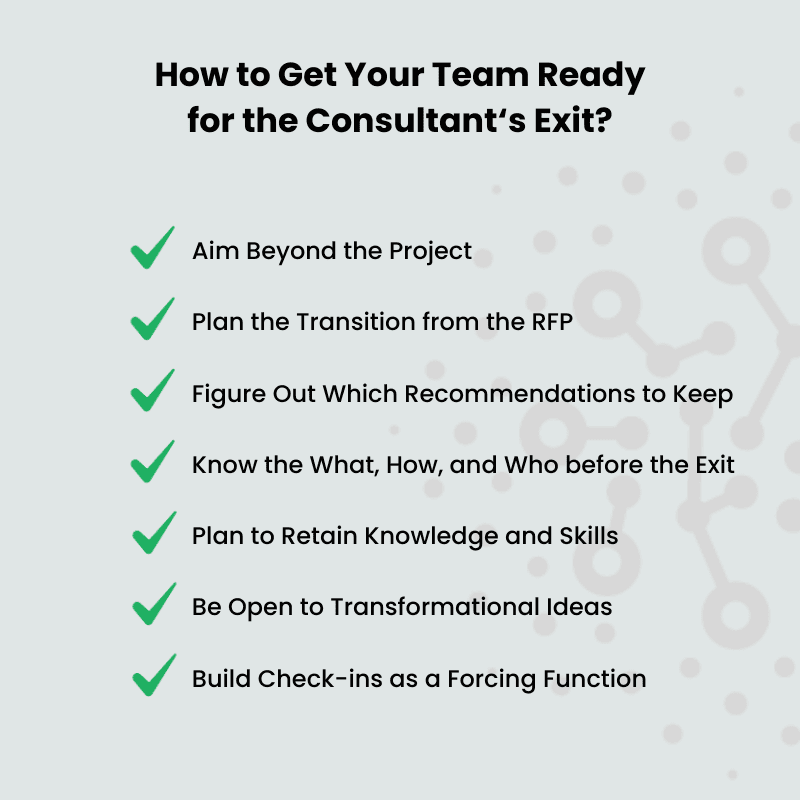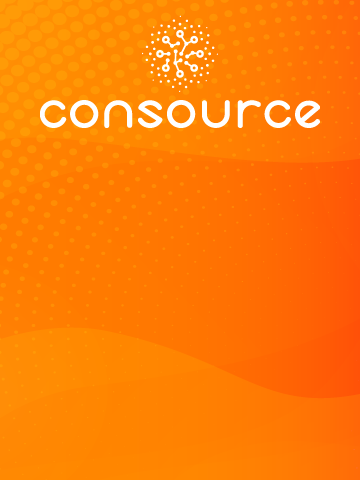So, you’ve hired a consultant for your consulting project management needs. Perhaps in hopes that they’re the knight in shining armor riding in on a whiteboard marker, ready to draw the path to salvation for your company’s challenges.
As an executive seasoned enough to have seen a PowerPoint or two, you understand the need for a solid consulting project management game plan—with its neat timelines and ambitious objectives—and a compelling RFP to lure in the right partners.
But what many in your loafers might neglect is what happens after the consultant packs up their charts and graphs and heads for the door: the all-important follow-up.
Because let’s be frank, engaging in consulting project management isn’t just about having another coffee aficionado in the office. It’s an investment. And the real dividends from this investment? They materialize through meticulous follow-through.
Without further ado, here are seven tips to ensure your consulting dollars don’t simply waltz out the door with them.
1. Aim Beyond the Project in Consulting Project Management
Envision what success will look like. No, not at the end of the project—longer-term. Picture someone about to break a block of wood or concrete with a karate chop.
If he aims for the block, he instinctually will start to draw back a bit just as he is about to make contact with the block. Now picture him focusing a foot past the block as he aims, then chops. Crack!
Aim past the project. That will help begin to mark the right follow-up path.
2. Plan the Transition from the RFP
Remember, the RFP is all about procuring solutions, not just making a purchase. With that in mind, think long-term and include the ways to determine whether consulting project management goals were met and additional consulting support is needed once the consultant leaves.
Keep in touch. Executives and consultants should keep in touch to ensure that the consultant’s recommended systems and ideas work to resolve the original issue.
Yes, we’re talking about data collection—evidence that the new knowledge and systems work, fail, or result in zero changes that are meaningful. Build in the collecting of data points during the project for three to six months, or even a year afterward.
The data points need to measure the extent to which the solution you were aiming for does exist. You or the consultant can analyze these data as a way to determine project success, failure, or status quo, as well as the next steps to take
Include a compliance check within the RFP. Once the original project ends, the consultant should schedule a return visit to determine to what extent your team absorbed new lessons and how well new systems are being incorporated as intended.
The last deliverable could actually be the proposed way forward.
3. Decision Time: Figure Out Which Recommendations to Keep
Just because you paid a consultant to address a gap and offer a solution does not mean that your company needs to jump in blindly.
The company’s senior executives can sift through the consultant’s suggestions and cherry-pick the ones that are most likely to solve the issue at hand.
Once that sifting occurs, meet with the consultant for feedback on what your team has chosen as the wheat and what’s the chaff.
After all, the consultant may have experience with what result can occur (positive or negative) if recommendation A is kept but recommendation B is tossed.

4. Know the What, the How and the Who Before the Consultant Exits
Clarity with regard to the next steps is key. Knowing what to do but not how to do it is a roadblock to success.
Before the consultant departs, take the time to make sure that everyone affected knows what to do next, and how to do it and that the appropriate resources will be allocated.
The combination of the what to do and the how to do it makes the difference between a return on the consulting investment or a loss.
It’s not enough that employees just understand. The rubber won’t meet the road if they can’t also implement what they know they need to do.
Plan ahead to build in ways to manage implementation and potential failures.
- Who will be accountable for implementing the plan? How will the activity be steered?
- Who will be responsible for correcting implementation issues? How often and by what method will that person be accessible?
5. Plan to Retain Learned Knowledge and Skills
Whether it’s staff turnover or vacation time, new skills can get lost in life’s shuffle. You need a plan to keep that new information at the forefront of employees’ work.
- Is transferring knowledge explicitly part of the mandate?
- Will you offer annual refresher courses? Online manuals? Access to the consultant via email or web forum? All of the above?
- Will there be a mentoring relationship for an extended timeframe once the project ends? Mentoring often makes the difference between long-term ROI or loss on consulting investments. Just be sure to structure the arrangement with a timeline and clear data points for ending the mentorship.
6. Keep the Door Open to Transformational Ideas.
You know what often happens when you focus for a time on a project and then step away. New, perhaps even transformational ideas may pop up unexpectedly.
Depending on how your company is structured in terms of consulting project management, novel ideas can float up to your senior team or through your project team. Or perhaps the consultant experiences a couple of brainstorms once the project has ended.
You will want access to these raw new ideas. Coming on the heels of intense project focus, they may contain just the right germ of an idea that, when shaped and cultivated, can provide an unforeseen breakthrough that boosts your competitive edge.
Explicitly create the potential for following up with the consultant on promising innovative ideas and approaches after the initial project ends.
7. Build in Check-ins as a Forcing Function
Finally, assuming that you found the consulting team helpful, build in check-ins at the frequency that matches your business tempo to take a fresh look at what was accomplished and perhaps what needs to be tweaked now to continue to optimize the original investment.
These build-in check-ins as forcing function will also prevent business as usual from taking over. Procuring the consultant and working through the project aren’t the goals. Sustainable solutions that boost your competitive edge are the goals.
Meeting those goals requires you to lead the company through a follow-up phase once the consulting team leaves to ensure the highest return on your consulting investment.
In Conclusion: Planning for Goodbyes Should Begin at Hello
When the curtain falls on a consultant’s project, it’s not uncommon to find both parties exchanging courteous handshakes and pleasantries, with the underlying sentiment being, “Well, that was fun.
Now, what next?” Unfortunately, too many projects go adrift post-consultation, largely due to a failure in foresight. For consultants, it’s not too surprising.
After all, leaving room for encore performances—subsequent projects to address issues ‘discovered’ along the way—might be part of their playbook. And can we blame them? Their business thrives on repeat engagements.
But for the client? This oversight is more like shooting oneself in the foot. Not intentionally, of course, but the result is just as painful. Post-project missteps can diminish, if not nullify, the benefits reaped from the consultation.
To dodge this pitfall, start laying the bricks for the project’s conclusion right at its commencement. Plant the seeds of sustainability in the fertile ground of the RFP phase.
After all, if you’re going to invite a consultant to the dance, make sure you’ve also planned for the music that’ll play when they leave the floor.
consulting project management consulting project management consulting project management
consulting project management consulting project management consulting project management
consulting project management consulting project management consulting project management

How Consource Can Help?
Navigating the twists and turns of consultancy can be a breeze. With Consource‘s RFP and SOW wizards at your fingertips, ensure that you’re planning for success right from the outset. Start smart, finish stronger—choose Consource.








0 Comments